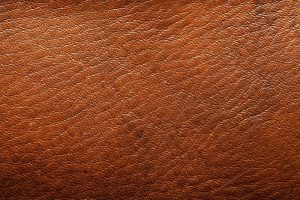How Is Leather Processed?
Leather can be produced from various animal skins including cows, goats, sheep, alligators, ostriches and many more to make all types of products such as clothing, furniture and handbags. Humans have been using leather for a very long time to make these products due to its high tensile strength, great insulating properties, high puncture resistance and many other amazing properties that leather has.
So how is an animal hide turned into this amazing material with so many uses? In this article we will go over the steps that tanners use to turn a raw animal hide into leather, which can take two weeks or more to complete.
Preservation
The very first step, after removing the skin from a deceased animal of course, is to treat the hide in order to stop it from deteriorating. This step, also known as curing, can be accomplished through several different methods such as salting, chilling or using chemicals that preserve the hide.
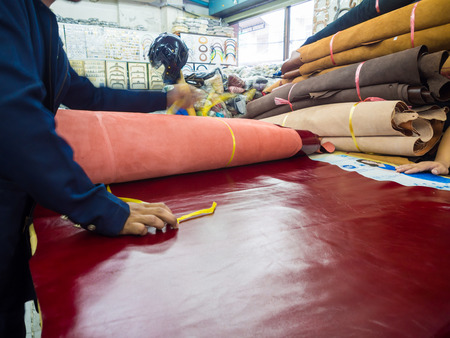
Soaking
After the hide is cured, it becomes very dry and can also have some dirt or salt attach to it. To re-hydrate the hide it is soaked in water for a few hours to a couple days. This process not only allows the hide to rehydrate, it also washes it of any salts or dirt that attached to it during the curing process.
Liming
During this process the hides are placed into a drum and soaked with an alkali solution. Using a paddle, the tanner will swish the hide around inside the drum in order for the alkali solution to penetrate the hide. The main purpose of this step is to remove the epidermis, fats and hair from the hide and to cause the hide to swell due to the pH of the solution used.
Fleshing
In this step, the hide is passed through a machine that is built to remove any subcutaneous material from the flesh side of the hide.
Splitting & Reliming
After the hide has all the hair and fleshy parts removed, it is split into at least two layers and then put through the liming process once more. The reliming process is done to make the hide expand even more byt removing proteins from it.
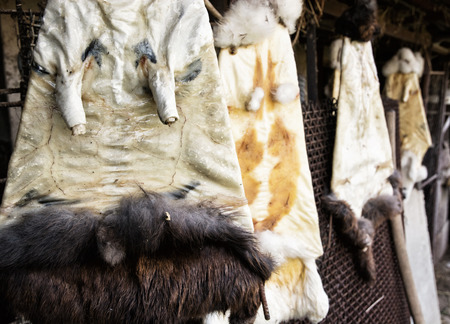
Deliming
This is essentially a washing process which has two main objectives:
- to remove alkali from the hide that was introduced during the liming phase, which will make the hide lose it’s swelling
- slowly lowering the pH of the hide
Bating
The goal of this step is to make the hide pliable in order to get it ready for the tanning process. Using enzymes, this process makes the hide smooth and soft while also cleaning it of suds and any unwanted proteins that remain.
Degreasing
During this step, detergents and solvents are used to remove any remaining natural fats and oils so that there is no obstructions on the hide during the tanning phase.
Pickling
Salts and weak acids are used to lower the pH of the hide making it more acidic in order to help with the penetration of tanning agents.
Tanning
This is one of the most important steps in leather processing. Using one of several techniques, the proteins of the raw hide are converted into a stable material which will not decay. Once the tanned leather is dried out, it will take a more flexible form.
In order to achieve this process, the hide is placed into a rotating drum to soak in the tanning liquid. Once the tanning liquid penetrates the hide evenly, the pH inside the drum is slowly raised to get rid of the acidity introduced during the pickling phase.
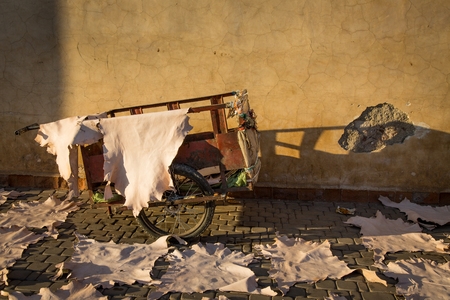
Depending on the final use of the leather, several tanning solutions can be used, including:
- mineral tanning solutions such as chromium
- vegetable tanners derived from plant extracts to make thick brown leathers
- oil tanners used to produce soft leathers that can be turned into fashion items
Splitting & Shaving
A machine is then used to split thick leathers into two or more pieces. The layer that does not have a grain surface will most likely be turned into suede.
After it is split, a second process of shaving is done to give the leather piece a uniform thickness throughout.
Neutralisation
In this phase, the pH of the leather is increased closer to a neutral state of 5-6.5, preparing it for some of the final phases required for leather processing.
Dyeing
This is an important step in determining the value of the leather. Certain dyes will be used to give the leather a large variety of desired colors, depending on it’s final use. Some dyes only need to be applied to the surface of the leather, while others need to completely penetrate into the deeper layers of the hide.
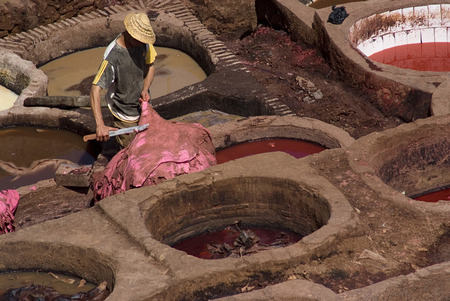
Fatliquoring
Another very important step, fatliquoring fixes oils and waxes to the leather fibres. This is what keeps leather soft and flexible, reducing the chance of it drying out.
Samming & Setting
During these phases, a large portion of the water content is removed from the leather. The leather is also stretched out in order to make the grain side more smooth.
Drying
The leather is then further dried to levels of about 10%-25% moisture. The most common method to achieve this is called dry drumming which essentially makes the leather softer by separating the fibres, usually inside of a rotating drum.
Finishing
The final stage of leather processing. In this phase, any noticeable defect is fixed. For example, colors are made uniform, grain defects are fixed and a protective coating is placed to give the leather surface properties of water resistance and resistance to abrasion.
